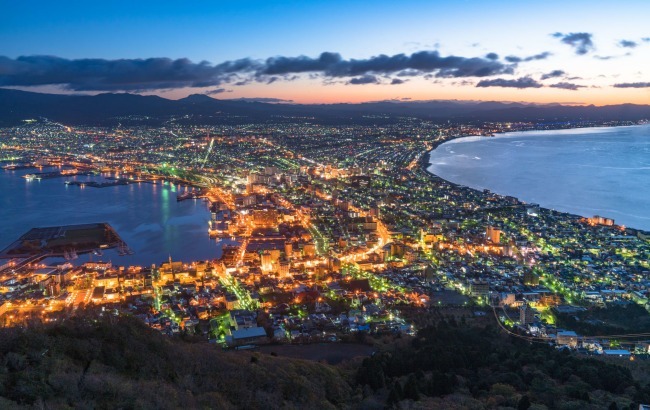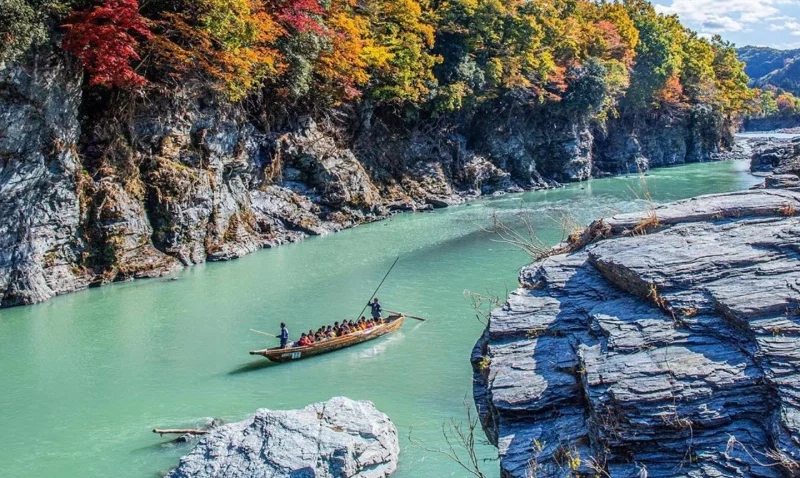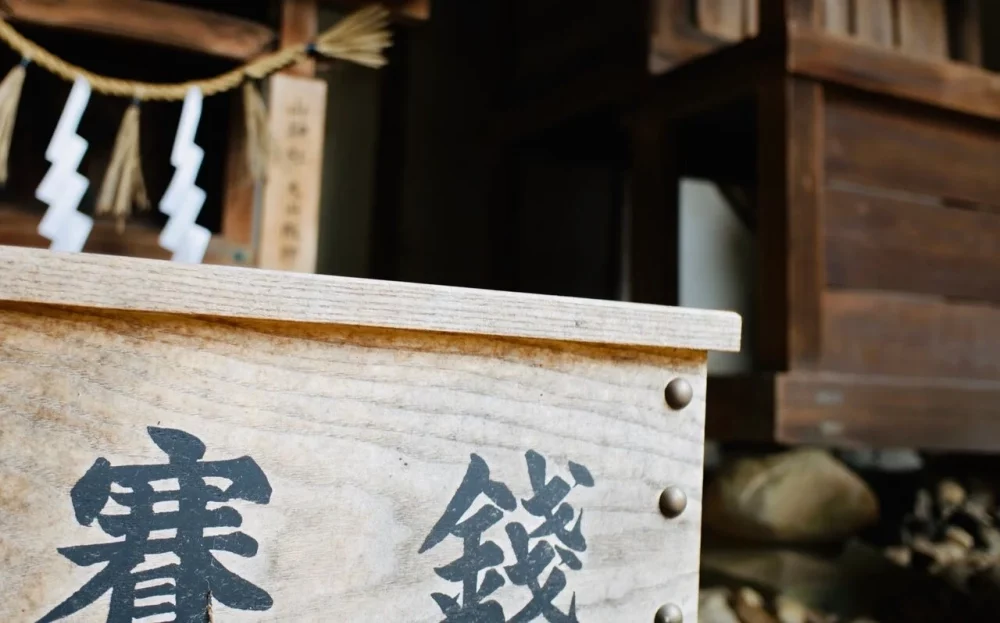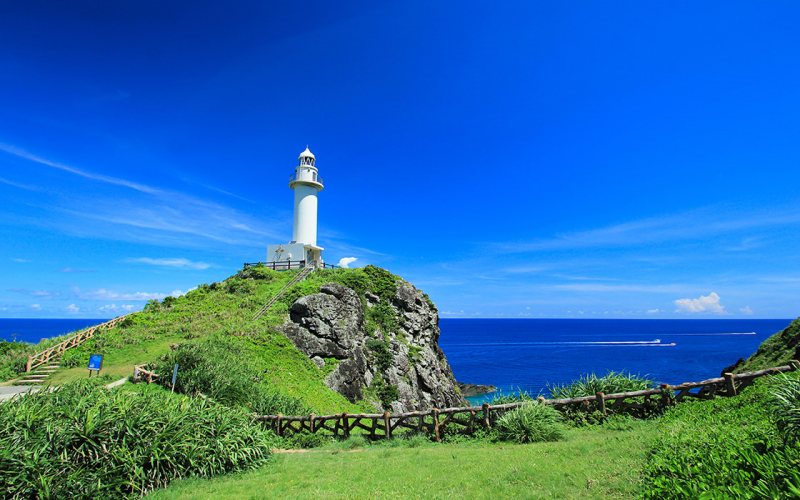
Like Kyoto, Nara is a popular tourist destination in the Kansai region, and many Japanese students visit Nara on school trips during middle and high school.
When it comes to sightseeing in Nara, Nara Park covers an extensive area of about 660 hectares, approximately 140 times the size of the Tokyo Dome. Nearby, you'll find attractions like Todai-ji Temple and Kasuga Taisha Shrine.
This is a historical park that beautifully complements the Nara of 1,300 years ago, which was once the capital.
In this article, we will provide a detailed overview of the highlights of Nara Park, nearby tourist attractions, and travel information.
Nara Park Overview
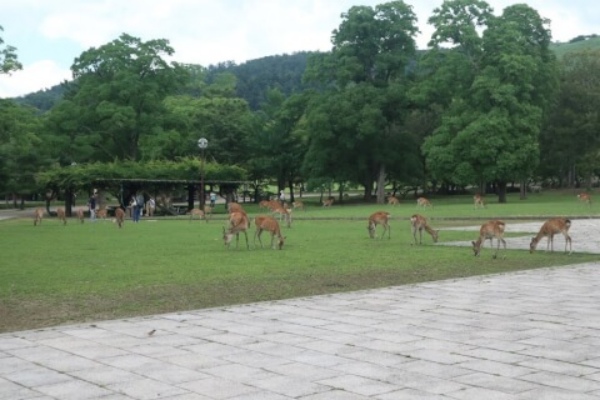
People who visit Nara consider Nara Park as the central point of their sightseeing. It is also renowned as a representative tourist destination in Japan.
Nara Park is located in the eastern part of Nara City, and it encompasses the beautiful natural surroundings of Todai-ji Temple, Kofuku-ji Temple, and Kasuga Taisha Shrine. The area surrounding Nara Park houses numerous national treasures and World Heritage buildings.
Much of the park is covered with grass and is home to around 1,200 deer. These deer are also the mascots of Nara Park and are quite popular among tourists. If you can, spend 200 yen to buy deer crackers to feed them; they will be delighted.
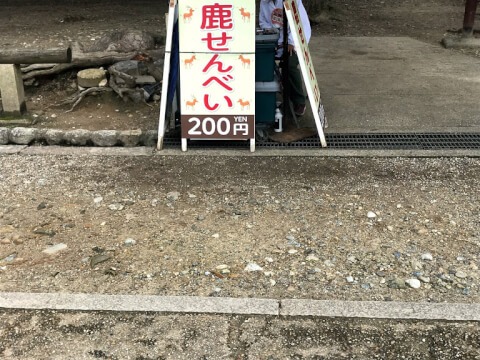
Although the name includes "Park," it is different from typical amusement parks.
Nara Park is a place to enjoy nature itself, the changing seasons, and wild deer.
It's also a unique park because there are very few ecologically pristine parks like Nara Park in Japan.
Nara Park Information
Address: 30 Noborioji-cho, Nara City
Access: Approximately 5 minutes on foot from Kintetsu Nara Station Approximately 20 minutes on foot from JR Nara Station
Phone: 0742-22-0375
Travel Information to Nara Park and Parking Details
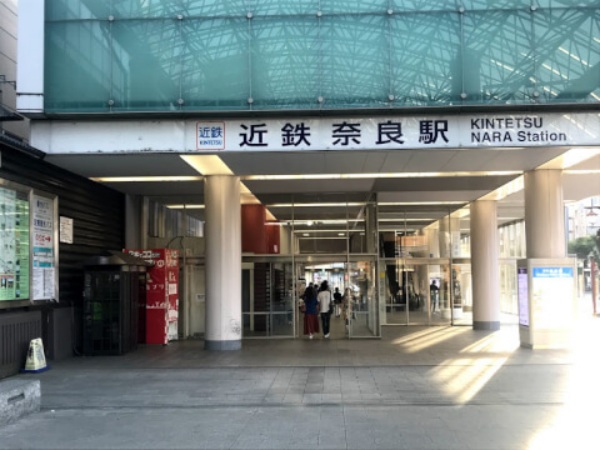
Here, we provide directions for accessing Nara Park from four different areas: Kyoto, Osaka, Nagoya, and Tokyo. Please note that ticket prices may vary based on the season and time, so use them as a guide.
We also offer parking information. If you plan to drive to Nara, make sure to check the parking details in advance.
From Kyoto to Nara
If traveling by train, you can reach Nara as follows:
- Take the JR Nara Line from JR Kyoto Station to JR Nara Station, approximately 1 hour, with a fare of 720 yen.
- Take the Kintetsu Kyoto Line from Kyoto Station to Kintetsu Nara Station, approximately 1 hour and 8 minutes, with a fare of 640 yen.
If driving, there are two routes: "Expressway" and "General Road."
- By Expressway: Approximately 40 kilometers, with a driving time of about 1 hour.
- By General Road: Approximately 40 kilometers, with a required time of about 1.5 hours.
From Osaka to Nara
If traveling by train, you can reach Nara as follows:
- Take the rapid train from JR Osaka Station to JR Nara Station, about 50 minutes, with a fare of 670 yen.
- Take the Kintetsu Nara Line from Osaka-Namba Station to Kintetsu Nara Station, about 36 minutes, with a fare of 570 yen.
If driving, there are two routes: "Expressway" and "General Road."
- By Expressway: Approximately 30 kilometers, with a driving time of about 45 minutes.
- By General Road: Approximately 30 kilometers, with a driving time of about 1 hour.
From Nagoya to Nara
If traveling by train, you can reach Nara as follows:
- Take the Shinkansen reserved seat or Kintetsu Limited Express, approximately 1 hour and 30 minutes, with a fare of 7,070 yen.
- Shinkansen reserved seat/Kintetsu Limited Express, approximately 1 hour and 45 minutes, with a fare of 6,550 yen.
- By local train, it takes about 2 hours and 40 minutes, with fares starting at 2,310 yen.
If driving, the route from Nagoya to Nara Park via expressways covers approximately 170 kilometers and takes about 2 hours and 40 minutes.
From Tokyo to Nara
There are three ways to get from Tokyo to Nara: by plane, by train, and by highway bus.
First, let's talk about how to reach there by plane. Since Nara doesn't have an airport, a stopover in Osaka is essential.
- From Haneda Airport or Narita Airport to Kansai International Airport or Itami Airport takes about 1 hour.
- From Kansai International Airport or Itami Airport to Nara takes about 2 hours, with fares starting from 1,500 yen from Kansai International Airport and 1,110 yen from Itami Airport.
If traveling by train, you can reach Nara as follows:
- By taking the Shinkansen Nozomi and Kintetsu Express for over 3 hours, the fare is 15,330 yen.
- By using the Shinkansen Nozomi and Miyakoji Rapid/Rapid/Regional Rapid Service for 3 hours and 15 minutes, the cost is 14,720 yen.
If traveling by highway bus, there are several options:
- Take the Nara Kotsu "Yamato-go" from Shinjuku for approximately 7 hours and 30 minutes, with fares starting at 5,980 yen.
- From Tokyo Station Yaesu, take the JR Bus "Seishun Eco Dream" or "Premium Dream" for approximately 8 hours and 40 minutes, starting at 3,500 yen.
Prices may vary based on the season and discount plans, so please confirm them when making a reservation.
About Parking in Nara Park
There are several parking lots around Nara Park, and parking fees and hours may vary depending on the parking lot and whether it's a weekday or a weekend/holiday. Some parking lots require advance reservations.
Highlights of Nara Park
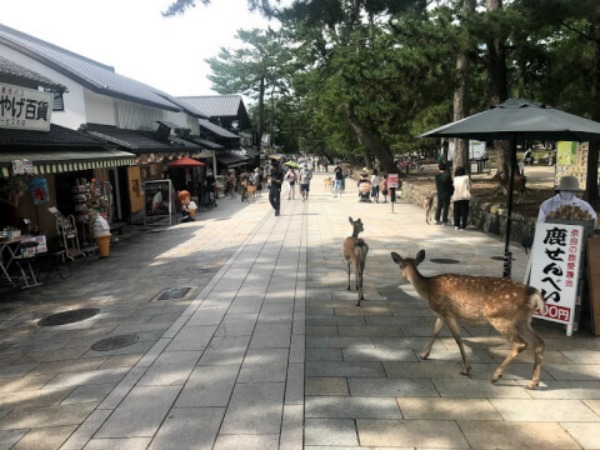
Nara Park boasts vast grounds and natural charm, with numerous must-visit attractions. Here, we will introduce the essential highlights of Nara Park that you should not miss!
1. Todai-ji Temple
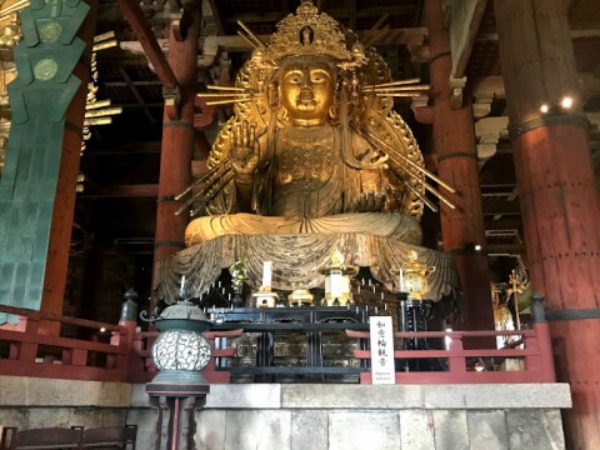
Todai-ji Temple, built in 743 by Emperor Shomu to protect the nation, is the representative temple of Nara and is renowned not only in Japan but also among foreigners as the Nara Great Buddha.
In 1998, it was designated as a UNESCO World Heritage Site, and it stands as a point of pride for Japan due to its wooden structure. While Todai-ji has a prominent image of the Great Buddha, it is also a place of religious devotion.
The "Great Buddha" often referred to as the "Big Brow Buddha," is the main Buddha statue of Todai-ji. It represents Vairocana, one of the Buddhas in Mahayana Buddhism.
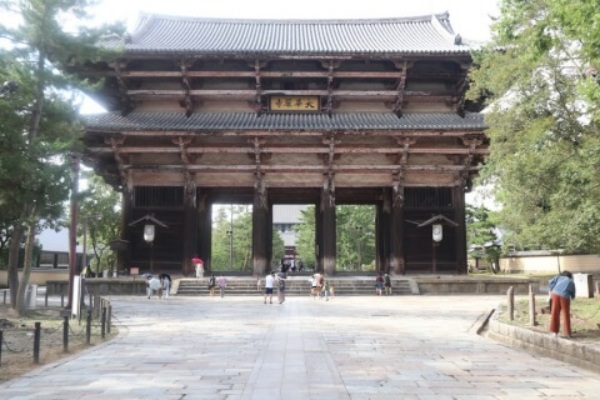
One of the main attractions of Todai-ji is the National Treasure Nandaimon Gate, which you'll see as soon as you enter the temple grounds. The Nandaimon Gate has undergone several renovations and dates back to the Kamakura period.

Two fierce-looking Nio statues stand on both sides of the gate, exuding a powerful presence.
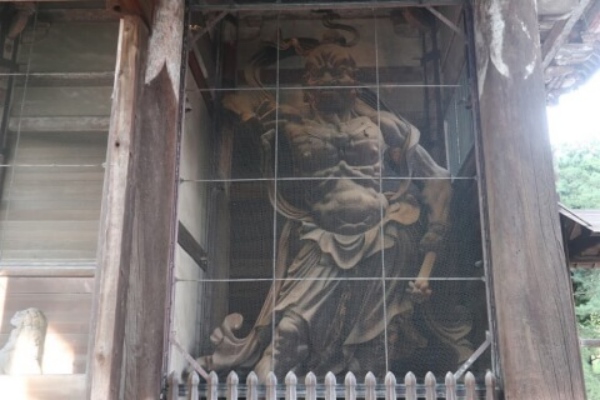
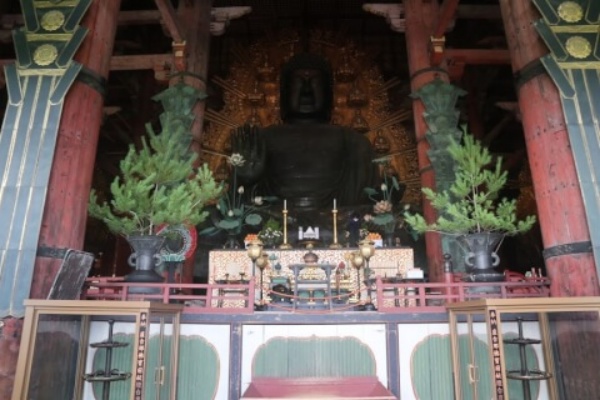
After passing through the Nandaimon Gate and paying the entrance fee, you'll encounter another must-see attraction, the Great Buddha Hall, which is designated as a National Treasure. Although it was rebuilt twice due to fires, during the Edo period, it was downsized to about two-thirds of its original size due to material shortages. Nonetheless, it remains the largest wooden structure in the world.
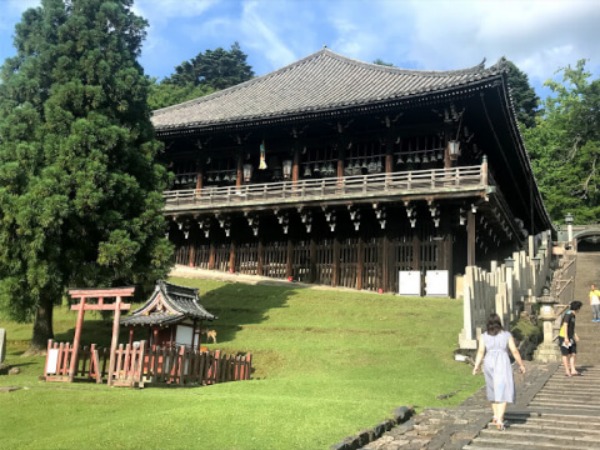
Additionally, don't miss visiting the Nigatsu-do Hall, which is just a few steps away from Todai-ji. It's highly recommended to climb to the top for a panoramic view of Nara City. On a clear day, you can enjoy a breathtaking vista.
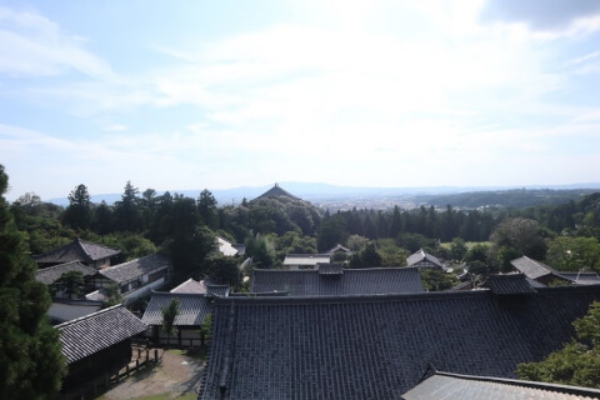
These are the must-visit attractions in Nara Park. Please enjoy the grandeur of the Great Buddha.
Todai-ji Temple Information
Address: 406-1 Zoshicho, Nara, Nara Prefecture
Access: From JR Yamatoji Line/Kintetsu Nara Line "Nara Station," it's about a 20-minute walk. Alternatively, take a bus from Kintetsu Nara Station to "Todai-ji Daibutsuden/Kasuga Taisha-mae" bus stop and walk for 5 minutes.
Phone: 0742-22-5511
Closed: No regular holidays
Operating Hours:
[April to October] 7:30 AM - 5:30 PM
[November to March] 8:00 AM - 5:00 PM
Admission Fee:
Adults (Junior high school age and older): 600 yen
Children (Elementary school age and younger): 300 yen
2. Kasuga Taisha Shrine
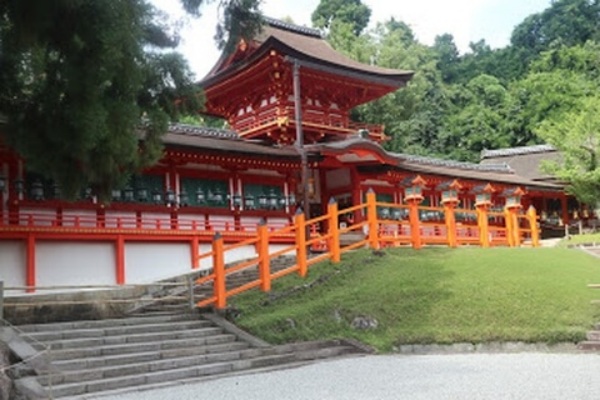
Kasuga Taisha, with a history dating back to 768, was constructed to pray for the protection of Heijo-kyo (the ancient capital) and the prosperity of its people.
Kasuga Taisha serves as the head shrine of approximately 1,000 Kasuga Shrines nationwide and is renowned for having the most lanterns of any shrine in Japan. In 1998, Kasuga Taisha and the Kasugayama Primeval Forest were designated as a UNESCO World Heritage Site under the title of "Historic Monuments of Ancient Nara."

One of its highlights is the "Pilgrimage Route," which serves as the main entrance to Kasuga Taisha. Along this approach, there are approximately 2,000 stone lanterns designated as important cultural properties.
Each lantern has a unique pattern and shape, making it a delightful stroll as you appreciate their variations.

As you proceed, you'll encounter the "Mantoro of the Fujinami-no-Tsukuri," an important cultural property. It is said to have many lanterns crafted during the Edo period. Lighting begins around 6:00 PM, offering a different and captivating view compared to daytime.

Since you've come this far, consider taking a look at the "Mantoro" on your way back. Illuminated by warm lights, it is truly a masterpiece. This is located inside a building, so you can see it at any time during the day.
Additionally, the Setsubun Mantoro Festival is held on Setsubun Day in February, and the Obon Mantoro Festival is held from August 14th to 15th. If the timing is right, visiting during these events is a great idea.
Kasuga Taisha Shrine Information
Address: 160 Kasuganocho, Nara, Nara Prefecture
Access: Take the Nara Kotsu Bus bound for Kasuga Taisha Honden from Nara Station on the JR Yamatoji Line/Kintetsu Nara Line. The bus ride takes about 11-15 minutes, and you'll get off at Kasuga Taisha Honden.
Phone: 0742-22-7788
Kasuga Taisha National Treasure Hall: Closed three times a year when exhibits change.
Kasuga Taisha Shinen (Shinen Botanical Garden): March to November, Mondays (Closed on the following day when a holiday overlaps); December to February, Mondays.
Operating Hours:
[March to October] 6:30 AM - 5:30 PM
[November to February] 7:00 AM - 5:00 PM
Admission Fee:
Special Visit to the Corridor: 500 yen
National Treasure Hall: Adults: 500 yen / University students: 300 yen / High school students: 300 yen / Junior high school students: 200 yen / Elementary school students: 200 yen
Kasuga Taisha Shinen (Shinen Botanical Garden): Adults: 500 yen / Children: 250 yen
Note: Pets are not allowed, the use of small drones is prohibited, and smoking is not permitted throughout the premises.
3. Kofuku-ji Temple
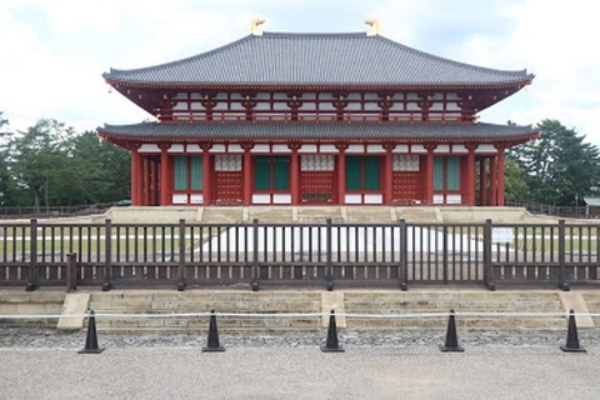
Kofuku-ji Temple is a venerable temple that celebrated its 1,300th anniversary of founding in 2010. The temple houses numerous temple treasures, including the Ashura statue designated as a national treasure.

One of its highlights is the Five-story Pagoda, which is also a symbol of Kofuku-ji. It stands at a height of 50.1 meters.
In 2018, the reconstruction of the Tokondo (Central Golden Hall) after 300 years garnered significant attention.
It was rebuilt on the same site and to the same scale as when it was originally constructed over 20 years ago. Inside, it enshrines the main image of Kofuku-ji, a seated statue of Shaka Nyorai.
Additionally, there are many deer in the temple grounds, so be sure to take some photos with them.
Kofuku-ji Temple Information
Address: 48 Noboriojicho, Nara, Nara Prefecture
Access: Approximately a 10-minute walk from Kintetsu Nara Station
Phone: 0742-22-7755 (Honbo Office)
Closed: No regular holidays
Operating Hours: 9:00 AM - 5:00 PM (Last admission at 4:45 PM)
Admission Fee: Adults (including university students): 700 yen / Junior and high school students: 600 yen / Elementary school students: 300 yen
4. Ukigumo-enchi
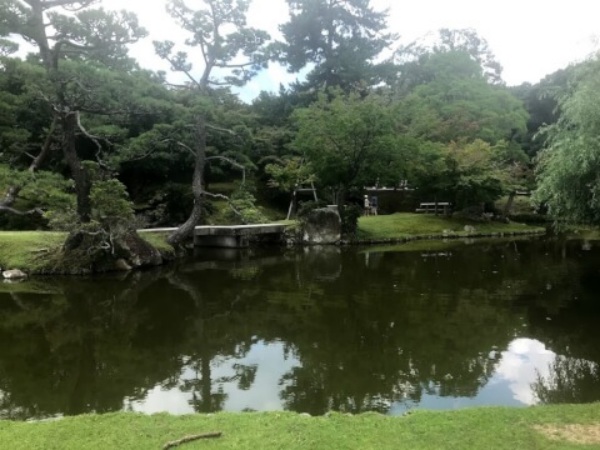
Ukigumo-enchi is the largest grassy square in Nara Park and is one of the most popular leisure areas in the park. Throughout the year, many people come to enjoy this space, which serves as both a park and a transportation hub to other sightseeing spots in Nara Park.
It is one of the liveliest areas in Nara Park where events like music festivals, Toukae, Nara Rurisai, and more take place. Around the park, you can enjoy the changing seasons, such as cherry blossoms in spring, hydrangeas in summer, and autumn leaves in fall.
While the signature Floating Cloud Area can get crowded, the park itself is quite extensive, so it rarely feels overly crowded. There are plenty of trees and benches throughout the park, allowing you to relax in a peaceful atmosphere.
Nara Park is quite large, and you can take a break here when you get tired. However, be cautious when eating, as the deer might approach you for food.
Ukigumo-enchi Information
Address: 23-2 Kasuganocho, Nara, Nara Prefecture
By bus from JR or Kintetsu Nara Station, take a bus heading to "Shigai Junkan" (City Loop), "Yamamurocho," "Fujiwara-dai," "Shikanomachi," "Nara Sahodai Tanki Daigaku," or "Kasuga Taisha Hozonkan" and get off at "To-ji Temple Daibutsuden/Kasuga Taisha Mae."
Approximately a 20-minute walk from Kintetsu Nara Station
Approximately a 30-minute walk from JR Nara Station
5. Nara National Museum
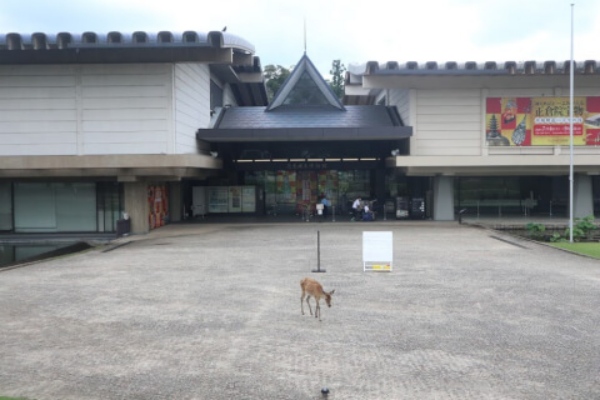
Nara National Museum is located within Nara Park and is the second oldest national museum in Japan after the Tokyo National Museum.
Established in 1894 (Meiji 27), it is known for its authentic Western-style architecture and was designated a national important cultural property in 1969. The museum comprises four exhibition halls: Nara Buddhist Statuary Hall, East New Hall, West New Hall, and Bronzes Gallery.
Notably, the Nara Buddhist Statuary Hall houses many national treasures and important cultural properties. It is the only place in Japan where you can view over 100 Buddhist statues simultaneously.
The museum has a total of 13 exhibition rooms categorized by "period," "size," and "type of Buddhist statue." There are many large Buddhist statues on display, making it a recommended museum for those who love large Buddha statues. The main hall is spacious and showcases a wide variety of large Buddhas, ensuring that you'll never tire of the exhibits.
Nara National Museum Information
Address: 50 Noboriojicho, Nara, Nara Prefecture
Access: Approximately a 15-minute walk from Kintetsu Nara Station; City Loop Bus (Outer Loop) No. 2, get off at "Himuro Shrine/National Museum"
Phone: 050-5542-8600
Closed: Mondays (If a national holiday falls on a Monday, it is closed on the following day)
Operating Hours: 9:30 AM - 5:00 PM
Open until 8:00 PM on Fridays and Saturdays for special exhibitions and masterpieces.
Open until 7:00 PM on March 12th (Omizutori).
Admission Fee: Adults: 700 yen / University students: 350 yen, High school students and those under 18: Free
6. Wakakusayama

Wakakusayama is one of the most famous attractions in Nara City, a small mountain with an elevation of 342 meters. The mountain is always crowded with many deer.
Throughout the seasons, you can enjoy the cherry blossoms in spring, green grass and ferns in summer, autumn leaves and pampas grass in fall, and the Wakayama volcano in winter. Such Wakakusayama is also known as "Mikasa-yama" and appears to be divided into three sections: the first, second, and third (near the mountaintop).
Additionally, every January, one of Nara's most famous annual events, "Wakakusa Yamayaki" (Wakakusa Mountain Burning), takes place. The entire grassy slope is engulfed in flames, creating a spectacular and rare sight.
From Wakakusayama, you can have a panoramic view of Nara City, known as one of the best views in Nara. It's very close to Todai-ji Temple and Kasuga Taisha, both of which are highly recommended places to visit.
Wakakusayama Information
Address: 469 Kasugacho, Nara, Nara Prefecture
Access: Take the Nara City Loop Bus from JR Nara Station or Kintetsu Nara Station and get off at "Daibutsuden Kasuga Taisha Mae." It's a 12-minute walk from there.
Phone: 0742-22-0375
Open: From the third Saturday of March to the second Sunday of December
Operating Hours: 9:00 AM - 5:00 PM (except for temporary openings)
Price: Adults (Junior high school age and above): 150 yen / Children (3 years and above): 80 yen
7. Shosoin Treasure House
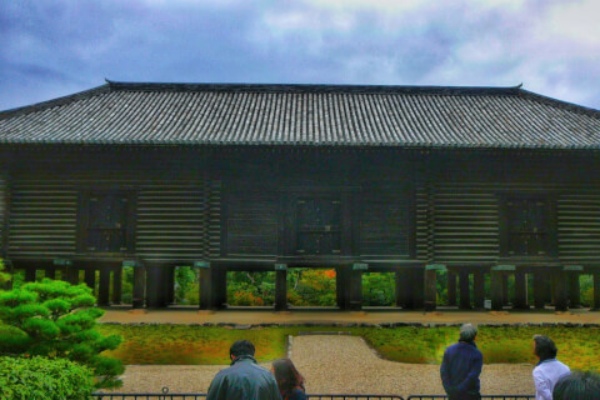
Shosoin is a large elevated warehouse built in the Azekura-zukuri style located in Nara Park. It was designated as a national treasure in 1997 and became part of the "Ancient Nara Cultural Properties" listed as a World Heritage Site in 1998.
Shosoin is a precious place where you can see many exhibits, with a wide variety of items stored, numbering around 9,000! These items include treasures and historical materials from Japan, treasures from the Chinese Tang Dynasty, tools, historical materials, and decorations used in the daily lives of emperors and nobility.
If you have the opportunity, visiting during the Shosoin exhibition in autumn is a great way to experience the history of ancient Nara.
Shosoin Treasure House Information
Address: 129 Kasugacho, Nara, Nara Prefecture
Access: Take a bus from JR/Kintetsu Nara Station heading towards Aoyama Morizaku and get off at Imano-kodo Station, then it's about an 8-minute walk.
Phone: 0742-26-2811
Closed: Saturdays, Sundays, and holidays (open every day during the Shosoin exhibition period, schedule may vary)
Operating Hours: Exterior viewing from 10:00 AM to 3:00 PM (during the Shosoin exhibition, from 10:00 AM to 4:00 PM)
Price: Exterior viewing is free
Go to Nara park also do not miss the surrounding sightseeing attractions!
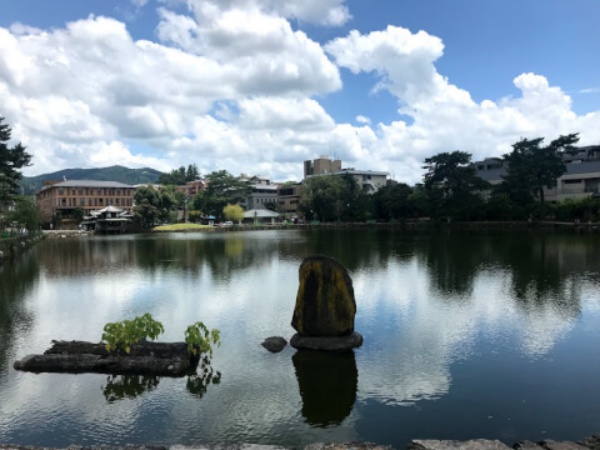
If you come to Nara Park, we will introduce recommended sightseeing spots around the area that you should visit together.
If you have the time and budget, be sure to visit the surrounding attractions!
1. Gango-ji Temple
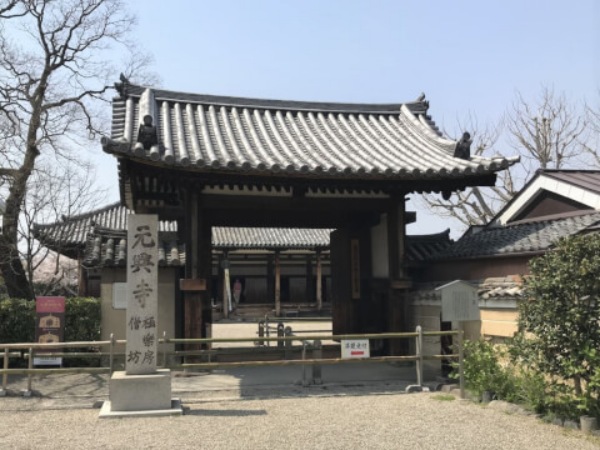
Gango-ji Temple is a Shingon Ritsu sect temple located in Nara City. It is one of the oldest temples in Japan and was preceded by the Horyu-ji Temple, which dates back to the Asuka period. Gango-ji Temple is a historically significant temple that has continued through the ages. In 1998, it was listed as one of the "Historical Monuments of Ancient Nara" and is recognized as a World Heritage Site.
When you visit Gango-ji Temple, be sure to see the East Gate, which is designated as an important cultural property and located at the entrance to the temple grounds. The East Gate is said to have been built during the Kamakura period and carries a rich historical significance.
Once you pass through the East Gate, you'll enter the main hall. Like the adjacent Zen-do (meditation hall), it was reconstructed from an old monks' quarters during the Kamakura period.
The tiles on the west side of the building have a history of over 1,300 years, dating back to the Asuka period before the Nara period. Additionally, there are many other attractions within the temple grounds, such as a Zen room, Fudotoku, and Horin-kan. Make sure not to miss them!
Gango-ji Temple is easily accessible from Nara Station and Nara Park, so make sure to pay us a visit!
Gango-ji Temple Information
Address: 11 Nakaincho, Nara, Nara Prefecture
Access: Approximately a 12-minute walk from Kintetsu Nara Station or a 20-minute walk from JR Nara Station
Phone: 0742-23-1377
Closed: No fixed holidays
Operating Hours: 9:00 AM - 5:00 PM (reception closes at 4:30 PM)
Price:
Adults (including university students): 500 yen
Junior high and high school students: 300 yen
Elementary school students: 100 yen
Group discount (20 people or more): Adults (including university students): 400 yen
2. Naramachi

Naramachi refers to the area near Kintetsu Nara Station, which is also one of the World Cultural Heritage sites surrounding the former grounds of Gango-ji Temple.
The main attraction here is leisurely strolling along its elegant streets. A slow, meandering walk can be quite enjoyable in itself.
Naramachi has many shops, including restaurants, general stores, souvenir shops, and trendy retro cafes that are popular among the younger crowd. It serves as the hub for Nara Park tourism, making it a great place for dining or purchasing souvenirs.
As you may pass through this area on your way to Nara Park, be sure to visit Naramachi either before or after your Nara Park tour.
Naramachi Information
Address: Southeastern central district of Nara City, Nara Prefecture
Access: A short walk from Kintetsu Nara Station or a 15-minute walk from JR Nara Station.
3. Horyu-ji Temple

Horyu-ji Temple is said to be the oldest wooden structure in the world and was designated as Japan's first World Heritage site in December 1993. It is believed to have been constructed in 607 AD during the reign of Emperor Suiko and the guidance of Prince Shotoku, making it a precious architectural gem. Within its spacious grounds, covering approximately 18.7 hectares, you'll find a multitude of national treasures, including the five-story pagoda, gatehouses, and the main hall, totaling over 2,300 artifacts!
The temple is divided into two sections: the Western Precinct, which houses the main hall, and the Eastern Precinct, home to the Kyodo Hall.
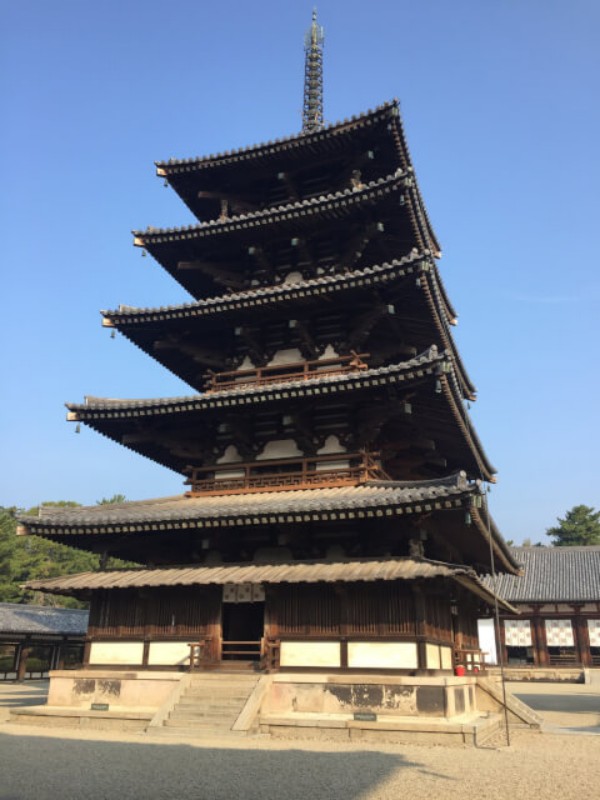
When you visit Horyu-ji Temple, be sure to see the five-story pagoda, believed to have been built during the Asuka period. The five-story pagoda is the symbol of Horyu-ji Temple and stands atop the Western Precinct at a height of approximately 31.5 meters. While you can't enter it, you can admire its majestic exterior from below, so be sure to take a look!
Another highlight is the Kondo, believed to have been created during the Asuka period. Inside, you'll find numerous Buddhist statues, with the three statues of Shakyamuni Buddha being a must-see. Don't miss out on them.
The entrance fee for Horyu-ji Temple is slightly higher than other temples, but it's well worth it due to the numerous attractions and the rich historical atmosphere it offers.
You can reach Horyu-ji Temple by taking a train from Nara Station, making it a convenient addition to your Nara sightseeing itinerary.
Horyu-ji Temple Information
Address: 1-1 Horyu-ji Sannai, Ikaruga-cho, Ikoma-gun, Nara Prefecture
Access: Take the JR Yamato Line Rapid Service (Line 2 or 3) from JR Nara Station to Horyu-ji Station. From Horyu-ji Station, it's about a 20-minute walk or a 5-minute bus ride (get off at Horyu-ji Temple Mae bus stop).
Phone: 0745-75-2555
Closed: No fixed holidays
Operating Hours: 8:00 AM - 5:00 PM (November 4th to February 21st: 4:30 PM)
Price:
General: 1,500 yen
Elementary school students: 750 yen
Group Rates (30 people or more per person):
General: 1,200 yen
University/high school students: 1,050 yen
Junior high school students: 900 yen
Elementary school students: 600 yen
The vast Nara Park and its surrounding attractions offer not only deer and the Great Buddha but also a host of other scenic spots where you can enjoy the beauty of nature in all four seasons.
Why not experience the charms of nature and the ancient city? These are truly sights not to be missed!

